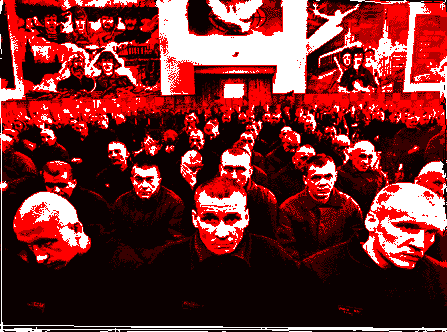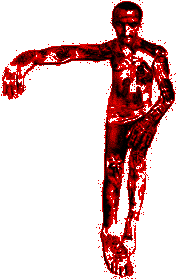According to the book of Genesis, God placed a mark on the world's
first murderer before sending him into exile. The mark of Cain
indelibly branded its bearer as a criminal and social outcast.
It is not known when tattooing first became a common practice in
Russian prisons and Stalinist Gulags. Soviet researchers first discovered
and studied this underground activity in the 1920s; photographs of
prisoners from that period suggest an already elaborate and highly
developed subculture. More than simple decoration, the images symbolically
proclaim the wearer's background and rank within the complex social system
of the jailed.
The Russian prison population is one of the largest in the world. From the
mid-1960's to the 1980's, thirty-five million people were incarcerated, and
of those, twenty to thirty million were tattooed. The tattoos display
inmates' contempt for official justice and retribution--phrases and images
directly mock the political system and the absence of any possibility for
"reform" within the jails. "For a convict, prison is a crime college,"
reads one typical statement. Convicted female gang members sometimes prefer
the simple declaration, "People are wild animals."
Images courtesy of Matty Jankowski of "The Body Archive."
Story by Alix Stewart Lambert.
Translations by George Adamovich and Suhrob Kadirov.






